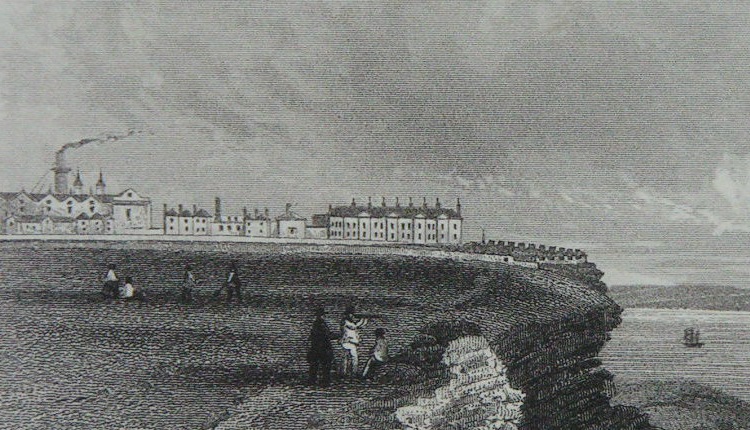Transatlantic Fenian | The lifelong armed struggle of William Roantree
On Easter Monday 1916 an elderly gentleman hurriedly made his way down Sackville Street in Dublin. His destination was the General Post Office where a group of rebels had proclaimed an Irish Republic and this old man, who had spent his life fighting for such a Republic, was not going to miss the opportunity to spur on the new generation of Irish freedom fighters.
At the age of 88 Fenian William Francis Roantree rapped his cane on one of the windows of the GPO. The young rebels inside opened the window and the old Fenian dispensed advice and words of encouragement
Roantree was born at 33 Main Street, Leixlip, County Kildare in 1828. By 1853, this son of a butcher left for the United States where he singed up for the US Navy, before joining General William Walker who led a conquest of Nicaragua. Walker’s troops can be considered a band of mercenary soldiers and in this force, Roantree rose to the rank of Major. It was a title which seemed to have stuck because many would address the Kildare man as Major Roantree.
After his stint in South America, Roantree headed to New York. He realised his time spent in Nicaragua was, essentially, a colonial conquest and he did not want to replicate what Britain had done to his own homeland. Hence, in 1860 he joined the Irish Republican Brotherhood.
Roantree proved to be a great organiser and one of the most trusted members of an organisation which too often fell foul of infiltrated informers. He became a bag man for the Fenians, transporting money from the US to Ireland in trunks he accompanied on several return trips across the Atlantic.
In 1864 he undertook a role which would result in his imprisonment. Roantree became the main recruitment officer in the IRB and his target of Irish men in the British army proved to be highly successful. The majority of his work was done in public houses across Dublin city where many a young Irish buck in British uniform tended to frequent. It is thought that hundreds, if not thousands of men were recruited into the Fenian movement under Roantree’s watch, but this success came to an end when, of course, an informer unravelled the rich tapestry Roantree was creating.
In 1865 Roantree was brought before the infamous Judge Keogh on charges of treason. As the Fenian hating judge was handing down a sentence of ten years penal servitude the undeterred Roantree interrupted him:
“Speak up and let me hear the sentence without note or comment!”
The Major was sent in chains across the Irish sea to serve time in Portland Prison where he had to endure days of stone breaking and rough treatment at the hands of prison guards. While serving time in England, his wife and two young daughters were in Dublin.

Behind every great man is a greater woman and for Roantree his wife Isobel Casey was such. She was steadfast in the face of losing her husband to the clutches of the opressor and set up a newsagents in Dublin city. As well as rearing her two children and looking after her newsagent business, Isobel also campaigned for an amnesty for Fenian prisoners. In 1871 her campaign bore fruition when amnesty was granted and Roantree, along with other Fenians, was released.
Roantree and his family sailed to America and on the 22nd of February, he was one of 13 Fenians invited to the White House for a reception with President Ulysses S Grant.
In America, Roantree continued his Fenian activities while also purchasing a public house in Atlantic City called the New York House. He became a vital cog in the works of Clan na Gael and travelled the states recruiting Irishmen into that organisation, including in the mines of Pennsylvania where every second miner was an Irish immigrant.
In 1877 Roantree was chosen to accompany the body of Colonel John O’Mahony, founding member of the IRB and Civil War veteran of the famous fightin’ 69th, back to Ireland for his burial in Glasnevin Cemetery. Roantree, who was decked out in a splendid green uniform a top a stunning white stallion, marshalled the large funeral through the streets of Dublin.
After Isobel’s death in Philadelphia in 1899 Roantree returned to Ireland where he worked as a ‘canvasser’ for the Dublin City Corporation. The corpo was awash with Fenians at this time and he easily fitted into his new role which involved the erection of canvas marquees over outdoor works.
Then in 1916, when news of a rebellion reached him at his abode on Gardiner Street, the 88 year old Fenian veteran made sure he would not miss a potential rising of the moon. Of course, like many a revolt in Irish history, the Easter Rising failed but it paved the way for a bigger fight, the War of Independence, which Roantree did not live to see.
He departed the world on the 20th of February 1918. His funeral at Glasnevin Cemetery was attended by the Lord Mayor of Dublin and Count Plunkett, the father of 1916 martyr Joseph. Also in attendance were many of the emerging freedom fighters who would carry the torch the Major and his fellow Fenian’s had lit decades before.
The grave of William Francis Roantree unfortunately fell into a state of neglect until some Leixlip locals along with Roantree relatives and the National Graves Association erected a fine grave marker in 2009 at the resting place of Major Roantree of County Kildare.
